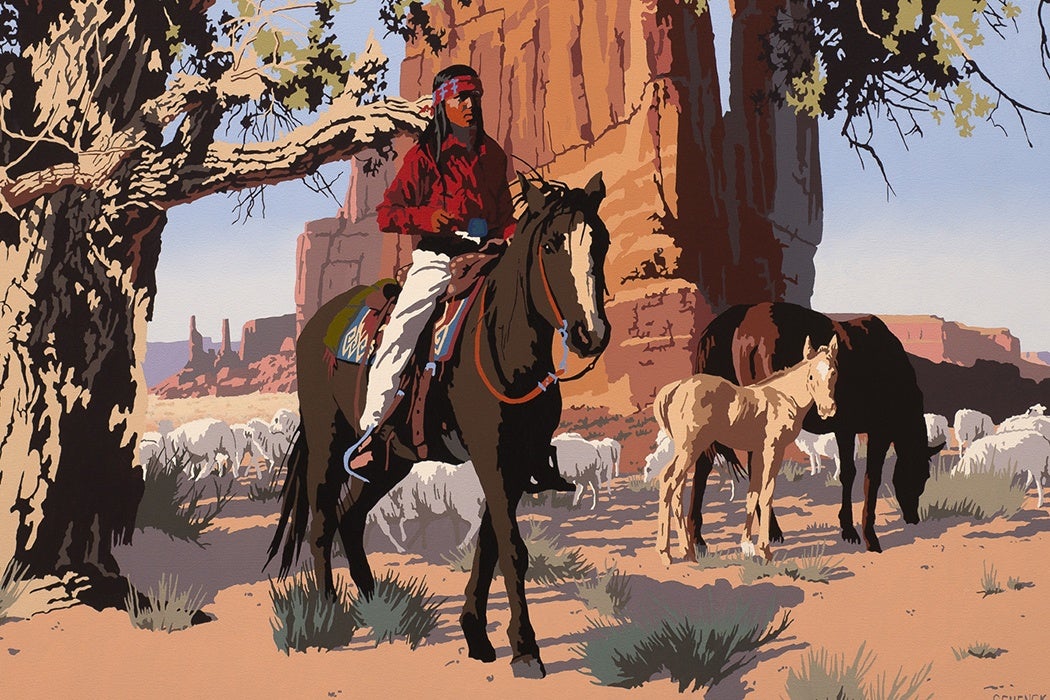The Autry Museum of the American West opens its annual exhibit Masters of the American West this month. Named after Hollywood cowboy Gene Autry, the Autry Museum has worked hard to combat stereotypes and ideological, even propagandistic, depictions of the West. In her article “No More Heroes: Western History in Public Places,” historian Marsha Weisiger explores the ways in which museums have begun to embrace and reflect a newer and more multifaceted, multicultural approach to reconsidering the public history of the American West.
The “old western history,” as Weisiger terms it, is one of great mythology and myth-making — and, in her words, “those myths had consequences.” Weisiger explores the dangers of older Western mythologies and histories that do not tell truths of American expansion. She notes that although the newer “critical stance” of western history is now “de rigeur among historians of the American West,” she asks “how well has that been translated into forms that engage the public?”
Weisiger notes that this newer narrative has not yet “infiltrated cable television,” and one look at the reinforced cowboy-and-Indian mythology that recent shows like Westworld and The Lone Ranger> confirm, certainly speak to her point. But, she argues that much could be done to inform the greater public if educators continue to focus on “producing sophisticated interpreters of the American West.”
A number of museums have, in fact, taken more nuanced approaches to revamping and retelling American history. Weisiger highlights a number of such shows, including the Oakland Museum of California’s Coming to California gallery theme. Here, senior curator of history Louise Pubols “focuses on the state’s ethnic and cultural diversity, and while it emphasizes the hopes and dreams that motivated people to move to the Golden State from all over the world, it doesn’t elide the ‘brutal conquest, racism, and environmental degradation’ that dampened those dreams.”
Another notable exhibit includes the Autry Museum’s Home Lands: How Women Made the West (also an exhibition catalog by the same title). Curator Carolyn Brucken and the “Women of the West chair” Virginia Scharff created this exhibit in order to explore traditional women’s art from different angles. As Weisiger notes, “[w]e’ve all seen some of the older artifacts in this exhibit—the ubiquitous Ancestral Pueblo bowls and jars, fiber baskets, wool blankets, awls, hide scrapers—what’s been missing from most museums, however,” Weisiger continues, “is the explanation provided here: women made these objects and used them to provide food, water, and clothing for their families as well as trade goods for market” (emphasis added).
Weisiger argues that this exhibit does a good job in balancing multiple truths — it “celebrates women’s accomplishments in the West” while it additionally “highlights the kinds of topics that are in the scholarly mainstream yet shunned as too controversial by many museums: Navajo women slaves in Spanish colonial households, discrimination against Denver’s first black female doctor, the forced relocation of Japanese Americans during World War II.” She asserts that “[t]elling these stories acknowledges the often grim history of the West and reflects the region’s ethnic character.”
In the present day, when truths are fighting “alternative truths,” Weisiger’s point is sentient and relevant. She concludes, “I think the public is hungry for an understanding of the past that is less about the sugar-coated, mythic West and more about its sometimes less palatable historical realties. People are seeking a past that explains the present.” And more of these harsh, but real and sophisticated truths can only help to continue the fight against whitewashed and alternative truths.







